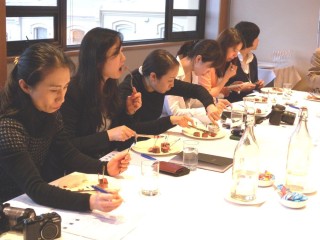 The Japanese retail beef market is showing signs of long-lasting changes in the wake of the devastating triple disasters which rocked the country on March 11.
The Japanese retail beef market is showing signs of long-lasting changes in the wake of the devastating triple disasters which rocked the country on March 11.
The earthquake, tsunami tidal wave and subsequent nuclear reactor breaches have combined to leave a deep scar on the Japanese consumer’s psyche, the effects of which could take a considerable time to overcome, recent survey work has shown.
Meat & Livestock Australia recently prepared a report based on findings from its own August survey of attitudes towards beef among Japanese retailers, together with outcomes from a survey carried out by a leading trade publication looking at generic supermarket retailing trends.
The over-riding signal from both was that there was now an element of ‘fragility’ about the Japanese retail market, driven by recovery from the natural disasters, currency issues, the sluggish economy, along with the recent radioactivity-related food safety concerns.
In combination with currency-driven competitive pricing from US imported beef supplies, this was making for a very challenging time for Australian beef exporters, MLA’s Japan regional manager Melanie Brock said.
Key messages to emerge were that the shift from eating-out to home consumption was set to strengthen among Japanese consumers, and food safety (stemming from the fear of radiation) was now of the greatest importance to consumers when making food choices.
While the report was prepared prior to the current beef radioactive contamination issue, it remains a good reference point, particularly in relation to Japanese consumer concerns about food safety.
The survey conducted by the Chain Store Age publication focused on both short-term product and buying trends following the disasters, as well as the longer-term outlook for Japanese consumer sentiment and buying patterns.
Responses suggested there was some regional polarisation following the disaster, with less difference in consumer behaviour in western Japan versus a massive shift in the eastern part of the country which felt the impact in buying patterns much more strongly.
Key considerations in the minds of consumers currently included the conservation of power; the state of the environment; safety and security; and health. Buyers generally were looking more closely at where products came from.
Many consumers indicated they were exercising a sense of restraint in their purchases of fresh and frozen produce, in some cases linked to potential power supply problems, caused by the nation’s reduced power generation capacity.
The power concerns appeared to be leading a trend toward the purchase of pre-prepared foods or items where the least possible power was necessary to prepare them at home. Thinly sliced beef that could be cooked quickly was an example. This could have a compound effect on the restraint of purchase of fresh meat, it was suggested.
In terms of the mindset of consumers, 68 percent of buyers stated that food safety and the place where a product had been made or manufactured were of the greatest importance to consumers when making food choices.
There was also a perceived shift in consumer sentiment implying that as long as the price was right, Japanese consumers would be more likely to choose an imported food item over a domestic item than before the disasters.
Many retail buyers felt that cutting-back in general among consumers, and on luxury items in particular, was a trend that they would continue to see.
About two thirds of meat department buyers surveyed felt there would be a rise in meat department sales, with about half saying costs were likely to rise, without any change in retail price.
“We expect all imported meat to grow, regardless of source, with promotions and price propositions,” said one general merchandise store buyer.
“We have had our people running Cooking Support stands, doing demonstrations and taste testings of meat since March. We will be stressing the nutritional and functional aspects of Aussie Beef, with the proposition that ‘Eating meat is good for you’. The healthy image is spreading for red meat now,” he said.
